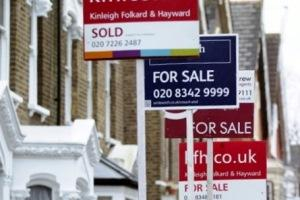 In accordance with the Government’s strategy for greater Home Ownership, a Five Point Plan for Housing was announced at the Autumn Statement of 2015, which included amongst its proposals charging property buyers higher rates of Stamp Duty Land Tax on the purchase of additional residential homes, such as those bought by buy to let investors and (potentially) second home owners, from 1 April 2016.
In accordance with the Government’s strategy for greater Home Ownership, a Five Point Plan for Housing was announced at the Autumn Statement of 2015, which included amongst its proposals charging property buyers higher rates of Stamp Duty Land Tax on the purchase of additional residential homes, such as those bought by buy to let investors and (potentially) second home owners, from 1 April 2016.
In effect the Government has targeted purchases ‘where, at the end of the day of the transaction, individual purchasers own two or more residential properties and are not replacing their main residence’.
It should also be noted that ‘the higher rates will also generally apply to purchases of residential property by companies’.
Accordingly, from 1 April 2016, property buyers, where applicable, shall be required to pay 3% more than the current rates of Stamp Duty on each band of their purchases. This change will mean that on relevant transactions:
- Between £0 – £125K, the new rate will be 3%;
- Between £125K – £250K, the new rate will be 5%;
- Between £250K – £925K, the new rate will be 8%;
- Between £925K – £1.5m, the rate will be 13%; and
- Lastly, on transactions over £1.5m, the new rate will be 15%.
Key questions/considerations for residential property buyers include:
1. Am I replacing my main residence with a new property?
2. If the answer to the first question is simply ‘Yes’ because the individual is selling their only property and buying a new one, they will not be subject to the increased rates of tax.
3. If the answer is a qualified ‘Yes’, whether they will pay the higher rate of stamp duty is dependant on the type of buyer.
(i) If the buyer owns several other properties, but is replacing their main residence with a new main residence, the normal rates of stamp duty will apply.
(ii) If the buyer intends to rent out their current home and move to a new residence, the higher rates of stamp duty will apply.
4. If the existing home owner’s new property purchase does not represent their new main residence, i.e. a second home or a buy to let investment, the higher rates of stamp duty will apply.
In addition, where a parent who already owns a property, buys a home for their child and is subsequently listed as one of the owners of the new property, the transaction will be subject to higher rates of stamp duty.
5. The higher rate of stamp duty shall also apply to transactions where married couples/civil partners own more than one residential property and purchase an additional one.
‘The Government will treat married couples and civil partners living together as one unit. This is consistent with other areas of the tax system’.
Therefore, (for example):
Mr A marries Mr B. They each own a property (which they purchased individually before they were married and used as their respective main homes). Mr B then sells his former main home and purchases a new property to rent out.
At the end of the transaction, Mr A and Mr B own more than one residential property and are not replacing their main residence, so the higher rates will apply.
6. Exception
If the main residence is not sold by an existing home owner and a new property is bought, the transaction is subject to the higher rates but a refund is available if the main residence is sold within 18 months.
7. TRANSITION RULES ALSO APPLY
The higher rates will only apply to purchases of additional residential property which complete on or after 1 April 2016.
‘If contracts are exchanged after 25 November 2015 then the higher rates will apply if the purchase is completed on or after 1 April 2016.
However, if contracts were exchanged on or before 25 November 2015 but not completed until on or after 1 April 2016, the higher rates will not apply’.
The above summary is not intended as a definitive assessment of the Stamp Duty changes/exceptions and you should always seek/consider independent legal and tax advice before proceeding with a property transaction.
In addition, the Government is still in the process of reviewing the related consultation following the publication of the proposed new measures.
Contact our Expert Property Lawyers
For further information or to speak to the author of this blog, Richard Greenby, please telephone us on 020 7387 2032 or complete our online enquiry form here.